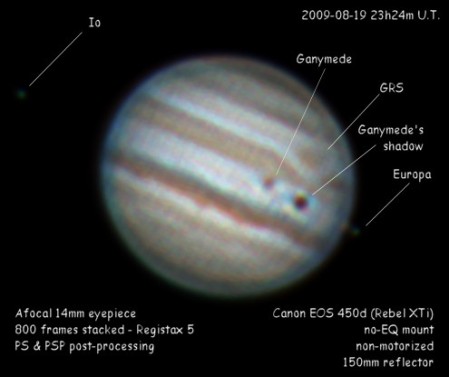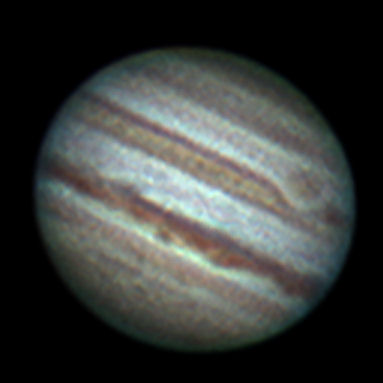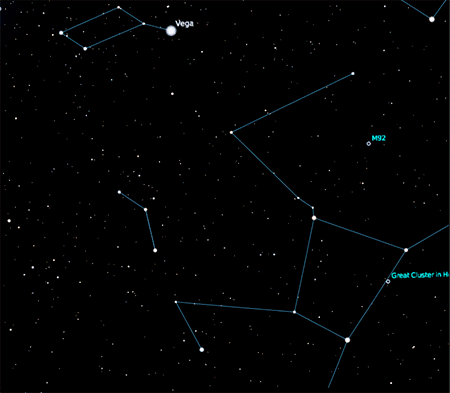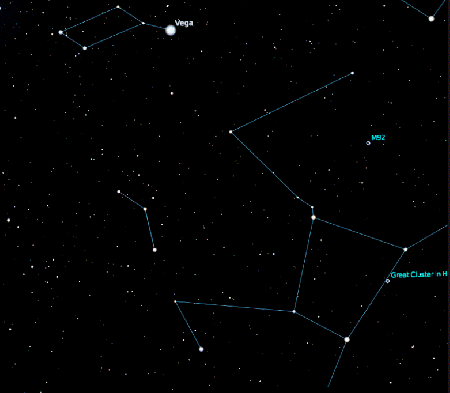I have a good seeing last night. So I got my best Jupiter yet. Here it is:

It is 4x resampled via Registax Mitchell and PS. After resampled I can spot more details in bands and polar zones.
As always I used the 6-inch no-EQ mounted newtonian reflector, the 14mm eyepiece doing afocal projection over the Canon EOS 450d (Rebel XTi) body and recording video using “EOS Camera Movie Record” free software. Three times Jupiter crossed over the field of view. Registax and VirtualDub added and stacked the footage properly.






